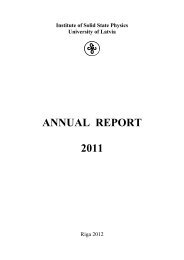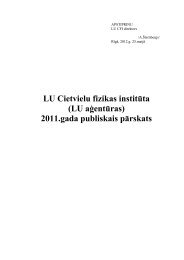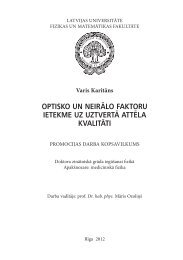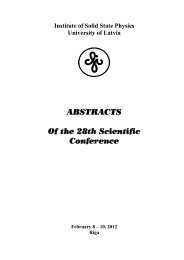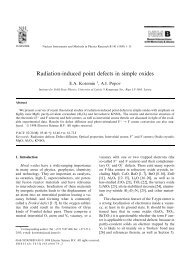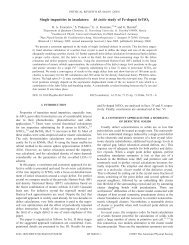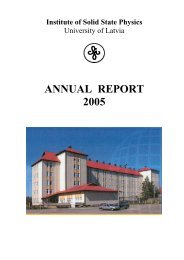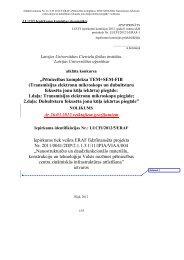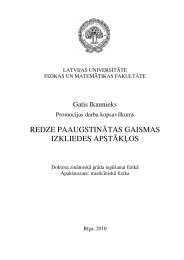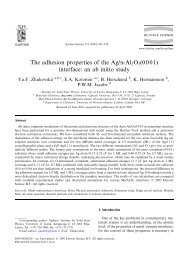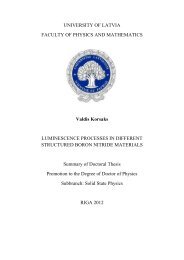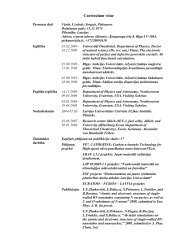Annual Report 2012 - Latvijas Universitātes Cietvielu fizikas institūts
Annual Report 2012 - Latvijas Universitātes Cietvielu fizikas institūts
Annual Report 2012 - Latvijas Universitātes Cietvielu fizikas institūts
You also want an ePaper? Increase the reach of your titles
YUMPU automatically turns print PDFs into web optimized ePapers that Google loves.
Laboratory of Hydrogen Energy Materials<br />
RESEARCH AND DEVELOPMENT OF MATERIALS AND DEVICES FOR<br />
HYDROGEN ENERGY TECHNOLOGIES<br />
P. Aizpurietis, A.M. Alsbergs, G. Bajars, I. Dirba, L.Grinberga, J. Hodakovska, L.<br />
Jekabsons, J. Kleperis, J. Klavins, A. Krumina, A. Lusis, V. Nemcevs , A.Sivars, G.<br />
Vaivars, M. Vanags,<br />
Institute of Solid State Physics, University of Latvia;<br />
I. Dimanta, A. Gruduls, I. Dirnena, V. Nikolajeva, I. Muiznieks<br />
Faculty of Biology, University of Latvia;<br />
J. Dimants, B. Sloka<br />
Faculty of Economics and Management, University of Latvia<br />
Hydrogen production: The Latvian Hydrogen Research Team at ISSP UL is<br />
developing inductive pulse power circuits for water electrolysis cell. The studies<br />
revealed a few significant differences compared to conventional DC electrolysis of<br />
water. New model is established and described, as well as the hypothesis is set that<br />
water molecule can split into hydrogen and oxygen on a single electrode (M.Vanags et<br />
all, <strong>2012</strong>). There has been found and explained the principle of high efficiency<br />
electrolysis. A new type of power supply scheme based on inductive voltage pulse<br />
generator is designed for water electrolysis. Gases released in electrolysis process from<br />
electrodes for the first time are analyzed quantitatively and qualitatively using<br />
microsensors (dissolved gases in electrolyte solution nearby electrode) and<br />
masspectrometer (in atmosphere evolved gases). The hypothesis of hydrogen and<br />
oxygen evolution on a cathode during the process of pulse electrolysis is original, as<br />
well as interpretation of the process with relaxation mechanisms of electrons emitted by<br />
cathode and solvated in electrolyte (M.Vanags et all, <strong>2012</strong>).<br />
Hydrogen production via bacterial fermentation is perspective and<br />
environmentally viable because widely available renewable resources can be used as<br />
substrates (I.Diamanta et all, <strong>2012</strong>). Biodisel production waste product, namely, crude<br />
glycerol can be effectively used for hydrogen production and large quantities of<br />
available crude glycerol are available in Latvia. Various bacterial isolates were tested for<br />
hydrogen gas production rates from glycerol with different test-systems. It was<br />
concluded that several of the isolated bacterial strains are suitable for bio-hydrogen<br />
production using crude glycerol as substrate (I. Dimanta et all, <strong>2012</strong>).<br />
134



